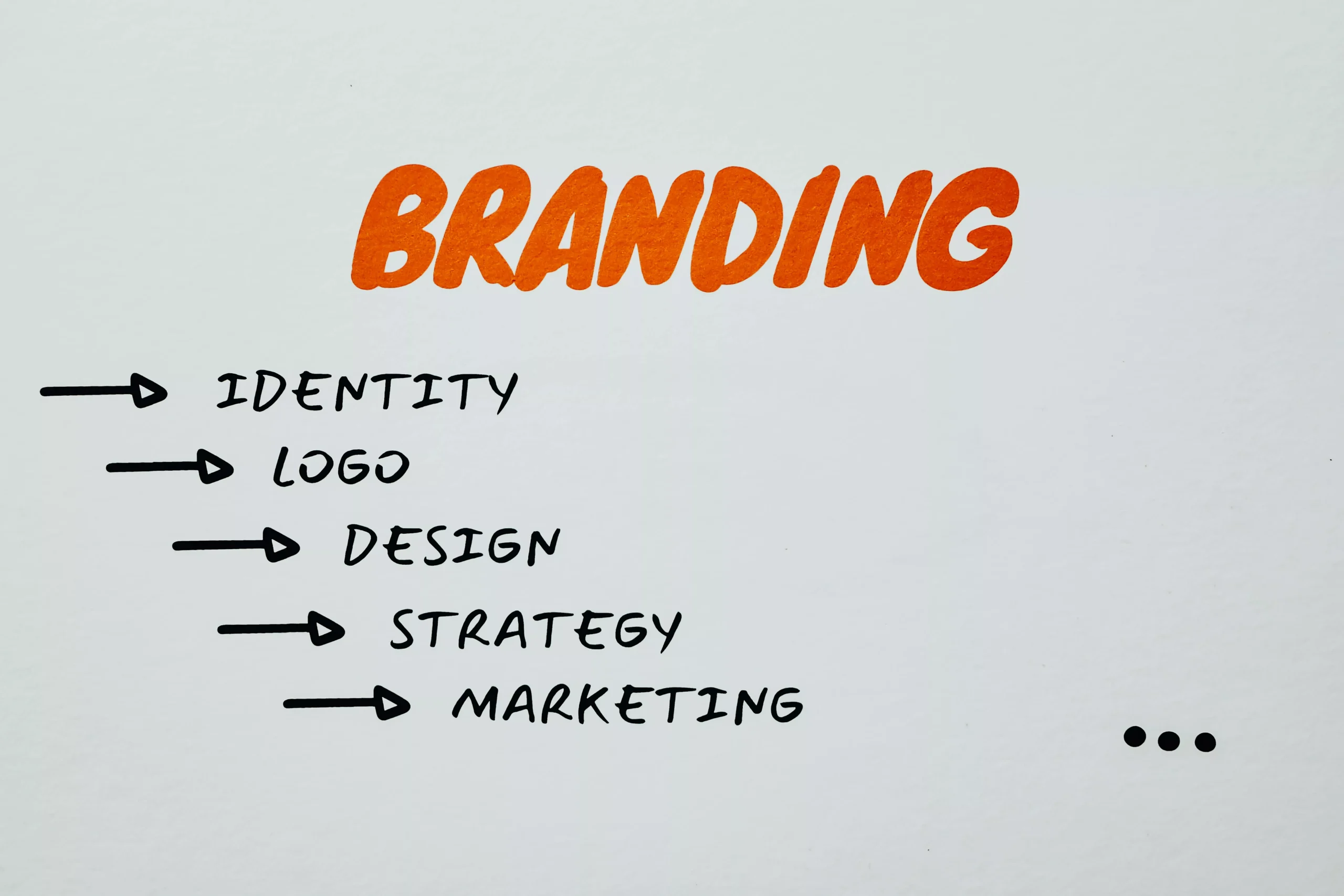As an SEO and marketing specialist having applied both Brand marketing and Content marketing in business for most of my customers, i’d say Brand marketing plays a pivotal role in the whole process of marketing. But what exactly is brand marketing, and how does it differ from content marketing? Let’s delve into the definitions, purposes, and distinctions between these two crucial marketing strategies.
What is Brand Marketing?
Brand marketing is a comprehensive approach aimed at creating, building, and maintaining a recognizable and favorable brand identity in the minds of consumers. It encompasses various strategies and tactics to shape how a company is perceived by its target audience.
Purpose of Brand Marketing:
- Building Brand Awareness: Brand marketing aims to make consumers familiar with a brand and its offerings. It strives to create a strong brand presence that stands out amidst competitors. By increasing brand awareness, businesses can attract more customers and foster brand loyalty.
- Establishing Brand Identity: Brand marketing helps define a brand’s unique identity, including its values, personality, and visual elements like logos and brand colors. This identity sets the brand apart and makes it memorable to consumers.
- Creating Brand Equity: Brand marketing contributes to building brand equity, which is the value associated with a brand beyond its tangible assets. Strong brand equity translates into increased consumer trust, loyalty, and willingness to pay a premium for the brand’s products or services.
- Generating Brand Advocacy: Through brand marketing efforts, businesses aim to cultivate a base of loyal customers who become brand advocates. These advocates actively promote the brand, share positive experiences, and defend it in the face of criticism.
Key Components Of Brand Marketing
Brand Identity
Brand identity is the soul of your business. It’s the visual and conceptual representation of who you are as a company. It encompasses your logo, color palette, typography, and overall design elements. These elements create a lasting impression on your audience, helping them recognize and connect with your brand.
- Logo: Your logo is the face of your brand. It should be unique, memorable, and reflective of your brand’s values and personality.
- Color Palette: Colors evoke emotions and perceptions. Choose a color palette that aligns with your brand’s message and resonates with your target audience.
- Typography: The fonts you use contribute to your brand’s personality. Whether it’s sleek and modern or traditional and classic, consistency is key.
Brand Positioning
Brand positioning is about how you differentiate yourself from competitors and position your brand in the minds of consumers. It’s the perception people have of your brand in relation to others in the market.
- Unique Selling Proposition (USP): What sets you apart? Identify your USP and use it to communicate why customers should choose your brand over others.
- Target Audience: Understand your audience’s needs, preferences, and pain points. Tailor your brand messaging to resonate with them.
- Competitive Analysis: Analyze your competitors to identify gaps in the market and opportunities for differentiation.
Brand Image
Brand image is the perception that consumers have of your brand. It’s shaped by your brand identity, messaging, and interactions with customers.
- Consistent Brand Messaging: Ensure your brand messaging is consistent across all touchpoints, from your website to social media to customer service interactions.
- Customer Experience: Provide exceptional customer experiences that align with your brand values. Happy customers become brand advocates.
- Brand Reputation: Monitor and manage your brand’s reputation online. Address any negative feedback promptly and transparently.
Metrics For Measuring Brand Marketing Success
Brand marketing encompasses all activities aimed at building brand awareness, enhancing brand perception, and fostering brand loyalty among consumers. Unlike direct response marketing, which focuses on immediate sales, brand marketing aims to create long-term value by establishing a positive brand image and emotional connection with the target audience.
1. Brand Awareness
Brand awareness is the extent to which consumers recognize and recall your brand. It’s the foundation of brand marketing and the first step in the consumer decision-making process.
Metrics to Measure Brand Awareness:
- Reach: The number of people exposed to your brand messages.
- Impressions: The total number of times your brand content is displayed.
- Brand Recall Surveys: Assessing how well consumers remember your brand.
2. Brand Engagement
Brand engagement measures the level of interaction and involvement consumers have with your brand. It reflects the effectiveness of your brand messaging in capturing audience attention.
Metrics to Measure Brand Engagement:
- Social Media Engagement: Likes, shares, comments, and mentions on social media platforms.
- Website Traffic: The number of visitors to your website and their behavior (time spent, pages viewed).
- Email Open and Click-Through Rates: Indicates how many recipients engage with your email content.
3. Brand Sentiment
Brand sentiment refers to the overall feelings and attitudes consumers have towards your brand. It’s crucial for understanding how your brand is perceived in the market.
Metrics to Measure Brand Sentiment:
- Sentiment Analysis: Using tools to analyze mentions of your brand across various channels and determine whether the sentiment is positive, negative, or neutral.
- Customer Surveys: Gathering feedback directly from customers to understand their sentiments towards your brand.
- Online Reviews and Ratings: Monitoring review platforms and aggregators to gauge public opinion.
4. Brand Loyalty
Brand loyalty measures the degree to which customers are committed to purchasing and advocating for your brand over competitors. It’s an indicator of customer satisfaction and trust.
Metrics to Measure Brand Loyalty:
- Customer Retention Rate: The percentage of customers who continue to buy from your brand over a certain period.
- Net Promoter Score (NPS): Measures the likelihood of customers recommending your brand to others.
- Repeat Purchase Rate: The frequency at which customers make repeat purchases.
What Is Content Marketing?
Content marketing is a strategic marketing approach focused on creating and distributing valuable, relevant, and consistent content to attract and retain a clearly defined audience. Unlike traditional advertising, which directly promotes a product or service, content marketing aims to provide value to the audience by offering information, entertainment, or education.
The Purpose of Content Marketing
1. Building Brand Awareness
One of the primary purposes of content marketing is to increase brand awareness. By creating valuable content that resonates with your target audience, you can raise awareness of your brand and what it stands for. Through blog posts, articles, videos, infographics, and social media posts, you can showcase your expertise and establish your brand as a thought leader in your industry.
2. Generating Leads and Conversions
Content marketing is an effective way to generate leads and drive conversions. By providing valuable content, you can attract potential customers to your website and encourage them to take action, whether it’s signing up for a newsletter, downloading a whitepaper, or making a purchase. High-quality content can help build trust with your audience, making them more likely to engage with your brand.
3. Educating and Informing
Content marketing is also about educating and informing your audience. By creating content that addresses their pain points, answers their questions, and provides solutions to their problems, you can establish yourself as a trusted resource. This not only helps in building brand loyalty but also in nurturing long-term relationships with customers.
4. Increasing Website Traffic
Creating and promoting valuable content can significantly increase traffic to your website. When you consistently publish content that is optimized for search engines, you improve your chances of ranking higher in search engine results pages (SERPs). Additionally, sharing your content on social media platforms and other channels can drive additional traffic to your site.
5. Improving SEO
Content marketing plays a crucial role in search engine optimization (SEO). Search engines like Google prioritize high-quality, relevant content when determining search rankings. By regularly publishing valuable content that targets relevant keywords and provides value to your audience, you can improve your website’s visibility in search results and attract more organic traffic.
6. Engaging Your Audience
Engagement is key in today’s digital world. Content marketing allows you to engage with your audience on a deeper level by encouraging likes, shares, comments, and discussions around your content. By creating content that resonates with your audience and encourages interaction, you can build a community around your brand and foster meaningful relationships with your customers.
Key Components Of Content Marketing
Content Creation
Content creation lies at the heart of any effective content marketing strategy. It involves crafting valuable, relevant, and engaging content that resonates with your target audience. Here are key aspects to consider:
- Understanding Your Audience: Before creating content, it’s crucial to understand your target audience’s needs, preferences, and pain points. Conduct thorough research, analyze customer data, and develop buyer personas to tailor your content effectively.
- Quality Content: Focus on producing high-quality content that provides genuine value to your audience. This could include blog posts, articles, videos, infographics, podcasts, and more. Aim for originality, clarity, and relevance in your content.
- SEO Optimization: Incorporate relevant keywords and phrases to improve your content’s search engine visibility. Optimize titles, meta descriptions, headers, and content structure to enhance SEO performance.
- Consistency: Consistency is key to maintaining audience engagement and building trust. Establish a content calendar and stick to a regular posting schedule to keep your audience engaged and coming back for more.
- Variety: Diversify your content formats to cater to different audience preferences. Experiment with various mediums such as text, video, audio, and interactive content to keep your audience engaged.
Content Distribution
Creating great content is only half the battle; distributing it effectively is equally important. Content distribution involves getting your content in front of the right audience through various channels. Here’s how to maximize your content distribution efforts:
- Multi-channel Approach: Utilize a mix of channels to reach your target audience, including your website, social media platforms, email newsletters, and third-party platforms.
- Social Media: Leverage the power of social media to amplify your content reach. Share your content across relevant social media channels, engage with your audience, and encourage sharing and interaction.
- Email Marketing: Build an email list of subscribers and regularly send out newsletters featuring your latest content. Personalize your emails based on subscriber preferences to increase engagement.
- Content Syndication: Partner with other websites or platforms to syndicate your content. This can help expand your reach and attract new audiences.
- SEO and Content Promotion: Optimize your content for search engines and promote it through paid advertising, influencer partnerships, and content sharing communities to increase visibility.
Audience Engagement
Engaging your audience is crucial for building relationships, fostering loyalty, and driving conversions. Here’s how to keep your audience engaged:
- Interactive Content: Create interactive content such as quizzes, polls, surveys, and contests to encourage active participation from your audience.
- Two-way Communication: Foster dialogue with your audience by responding to comments, messages, and feedback promptly. Engage in conversations, answer questions, and address concerns to build trust and rapport.
- Personalization: Tailor your content to the preferences and interests of individual audience segments. Use data analytics and marketing automation tools to deliver personalized content recommendations and experiences.
- User-generated Content: Encourage your audience to create and share their own content related to your brand. User-generated content can be a powerful way to build community and credibility.
- Measure and Analyze: Regularly monitor key performance indicators (KPIs) such as engagement metrics, traffic, conversions, and ROI. Use data insights to refine your content strategy and improve audience engagement over time.
Metrics For Measuring Content Marketing Success
Website Traffic
Monitoring your website traffic is essential for understanding how well your content is attracting visitors. Tools like Google Analytics can provide valuable insights into metrics such as total visits, unique visitors, page views, and average time on site.
- Organic Traffic: This measures the number of visitors who find your website through search engines. Increasing organic traffic indicates that your content is relevant and valuable to your target audience.
- Referral Traffic: Referral traffic shows how many visitors come to your site from external sources such as social media, backlinks, or other websites. This metric helps you understand the effectiveness of your promotional efforts.
- Direct Traffic: Direct traffic represents visitors who type your website URL directly into their browser. This metric can indicate brand awareness and loyalty.
Engagement Metrics
Engagement metrics measure how users interact with your content. Key engagement metrics include:
- Bounce Rate: The percentage of visitors who leave your site after viewing only one page. A high bounce rate may indicate that your content is not resonating with your audience.
- Time on Page: This metric shows how long visitors spend on a particular page. Longer average time on page suggests that your content is engaging and valuable.
- Social Shares: The number of times your content is shared on social media platforms like Facebook, Twitter, and LinkedIn. Social shares indicate that your content is resonating with your audience and has the potential to reach a wider audience.
Conversion Metrics
Ultimately, the goal of content marketing is to drive conversions. Conversion metrics measure how effectively your content is turning visitors into leads or customers. Key conversion metrics include:
- Conversion Rate: The percentage of visitors who take a desired action, such as signing up for a newsletter, downloading a whitepaper, or making a purchase.
- Lead Quality: Not all leads are created equal. Monitoring lead quality helps you understand the effectiveness of your content in attracting high-value leads that are more likely to convert.
- Sales Revenue: Tracking the revenue generated from content marketing efforts provides a clear picture of your return on investment (ROI).
SEO Metrics
Content marketing and SEO go hand in hand. Monitoring SEO metrics can help you assess the effectiveness of your content in improving search engine rankings and driving organic traffic. Key SEO metrics include:
- Keyword Rankings: Tracking the positions of your target keywords in search engine results pages (SERPs) helps you understand your content’s visibility and competitiveness.
- Backlinks: The number and quality of backlinks to your content influence its authority and search engine ranking.
- Page Authority and Domain Authority: Metrics that indicate the overall strength and credibility of your website.
Differences Between Brand Marketing and Content Marketing
Building Brand Awareness
Brand marketing is all about creating a distinctive identity for your business in the minds of your target audience. It focuses on shaping perceptions, fostering trust, and developing an emotional connection with customers. Here’s how brand marketing works and its objectives:
- Creating a Memorable Brand Identity: Brand marketing aims to establish a unique identity for your business through consistent branding elements such as logos, colors, slogans, and brand messaging.
- Building Trust and Credibility: By consistently delivering on promises and maintaining quality, brand marketing helps build trust and credibility among customers, leading to long-term loyalty.
- Differentiation from Competitors: Effective brand marketing sets your business apart from competitors by highlighting what makes your products or services unique.
- Increasing Brand Recognition: The ultimate goal of brand marketing is to ensure that your target audience recognizes and remembers your brand, even when they’re not actively engaging with it.
Generating Leads And Sales
Content marketing, on the other hand, focuses on providing valuable and relevant content to attract and engage a specific audience. It’s about offering solutions to problems, educating, entertaining, and ultimately driving profitable customer action. Here’s how content marketing works and its objectives:
- Creating Valuable Content: Content marketing revolves around creating high-quality, informative, and engaging content such as blog posts, videos, infographics, and eBooks that resonate with your target audience.
- Increasing Website Traffic: By consistently publishing valuable content optimized for search engines, content marketing drives organic traffic to your website, expanding your reach and visibility.
- Establishing Authority and Expertise: Content marketing allows businesses to showcase their industry knowledge, expertise, and thought leadership, positioning them as trusted authorities in their respective fields.
- Generating Leads and Conversions: Through strategic content creation and distribution, content marketing nurtures leads and guides them through the sales funnel, ultimately leading to conversions and sales.
Brand Marketing: The Emotional Connection
Brand marketing focuses on creating a strong emotional connection between the audience and the brand. It’s all about crafting a compelling narrative that resonates with your target audience on a deeper level. Brands often leverage storytelling, imagery, and symbolism to evoke specific emotions and associations.
Strategy:
- Storytelling: Brands tell stories that highlight their values, mission, and the impact they have on customers’ lives.
- Emotional Appeal: They use emotional triggers such as nostalgia, humor, or empathy to connect with the audience.
- Consistent Branding: Maintaining a consistent brand identity across all platforms reinforces brand recall and fosters trust.
Benefits:
- Strong Brand Loyalty: Emotional connections foster long-lasting relationships with customers, leading to increased loyalty.
- Differentiation: Brands can differentiate themselves from competitors by focusing on unique values and emotions.
- Brand Advocacy: Satisfied customers become brand advocates, spreading positive word-of-mouth and attracting new customers.
Content Marketing: Providing Value
Content marketing revolves around providing valuable, relevant, and informative content to the audience. Instead of directly promoting the brand, the focus is on addressing the needs, pain points, and interests of the target audience.
Strategy:
- Educational Content: Content provides answers to common questions, solves problems, or educates the audience on relevant topics.
- SEO Optimization: Content is optimized for search engines to improve visibility and attract organic traffic.
- Variety of Formats: Content can take various forms, including blog posts, videos, infographics, podcasts, and eBooks, catering to diverse audience preferences.
Benefits:
- Establish Authority: By providing valuable information, brands establish themselves as experts in their industry.
- Improved SEO: High-quality content improves search engine rankings, driving organic traffic to the website.
- Lead Generation: Valuable content attracts and engages potential customers, leading to increased leads and conversions.
Brand Messaging: Building a Strong Identity
Brand messaging revolves around crafting a compelling narrative that reflects your brand’s identity, values, and unique selling proposition. It’s about creating a consistent voice that resonates with your target audience. Here’s how brand messaging sets itself apart:
A. Defining Your Brand Identity:
- Brand messaging is about defining who you are as a brand. It encapsulates your mission, vision, and core values.
- It communicates what makes your brand special and why customers should choose you over competitors.
B. Establishing Emotional Connections:
- Effective brand messaging evokes emotions and forges a deep connection with your audience.
- It focuses on storytelling to engage customers on a personal level, fostering loyalty and brand advocacy.
C. Consistency Across Channels:
- Consistency is key in brand messaging. It ensures that your brand voice remains uniform across all touchpoints, be it your website, social media, or advertising campaigns.
- This consistency helps in building brand recognition and trust over time.
Educational Content Marketing: Providing Value Through Information
Educational content marketing focuses on providing valuable information to your audience. It positions your brand as an authority in your industry and helps customers make informed decisions. Here’s how educational content marketing differs from brand messaging:
A. Providing Solutions to Problems:
- Educational content addresses pain points and provides solutions to your audience’s problems.
- It educates customers about your products or services, highlighting their benefits and features.
B. Establishing Thought Leadership:
- By sharing insightful content, you position your brand as an industry expert.
- Educational content builds trust and credibility, encouraging customers to turn to you for guidance and advice.
C. Driving Organic Traffic:
- Educational content is optimized for search engines, driving organic traffic to your website.
- It focuses on relevant keywords and addresses common queries in your industry, attracting qualified leads.
Choosing The Right Strategy For Your Business – Between Brand Marketing & Content Marketing
Assessing Your Goals And Objectives
Before diving into any marketing strategy, it’s essential to clarify your business goals and objectives. Are you looking to increase brand awareness, generate leads, drive sales, or enhance customer loyalty? Your goals will heavily influence whether brand marketing or content marketing is the right fit.
Brand Marketing: Brand marketing focuses on building brand recognition and loyalty. It aims to create a strong, positive perception of your brand in the minds of your target audience. If your primary goal is to establish a memorable brand identity and increase brand equity, brand marketing might be your top choice.
Content Marketing: Content marketing revolves around creating and distributing valuable, relevant content to attract and engage a specific audience. If your goal is to educate your audience, establish thought leadership, and drive organic traffic, content marketing is likely the way to go.
Understanding Your Audience
Knowing your audience inside out is paramount to crafting effective marketing strategies. Understanding their needs, preferences, pain points, and behaviors will help you tailor your approach accordingly.
Brand Marketing: Brand marketing often relies on broad appeal and emotional connections. It aims to resonate with a wide audience and evoke feelings that lead to brand loyalty. If your target audience responds well to storytelling and emotional branding, brand marketing could be the right choice.
Content Marketing: Content marketing thrives on providing valuable information and solving problems for a specific audience. It requires in-depth knowledge of your target audience’s interests and challenges. If your audience prefers informative, educational content that adds value to their lives, content marketing is likely the better option.
Budget Considerations
Budget is a significant factor in determining which marketing strategy to pursue. While both brand marketing and content marketing can be effective, their costs and resource requirements vary.
Brand Marketing: Brand marketing often involves large-scale advertising campaigns across various channels, including television, print, radio, and digital platforms. It typically requires a substantial upfront investment and ongoing expenses to maintain visibility. If you have a sizable budget and want to reach a broad audience quickly, brand marketing may be suitable.
Content Marketing: Content marketing, on the other hand, can be more cost-effective, especially for small and medium-sized businesses. While it requires investment in content creation, distribution, and promotion, it can yield long-term results with a smaller budget. If you’re willing to invest time and effort into creating high-quality content, content marketing can offer significant returns on investment.
Creating a Balanced Approach
Ultimately, the most effective marketing strategy often involves a balanced approach that combines elements of both brand marketing and content marketing.
Brand Marketing: Use brand marketing to establish a strong brand identity and create awareness. Invest in memorable branding elements, such as logos, slogans, and visual aesthetics, to stand out in a crowded market.
Content Marketing: Supplement your brand marketing efforts with content marketing to engage and educate your audience. Create valuable content that showcases your expertise and solves your audience’s problems. Utilize blogs, videos, infographics, and social media to distribute your content and attract organic traffic.



